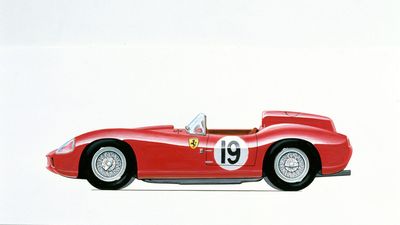









AMERICAN RESISTANCE
FERRARI WINS 12 HOURS OF SEBRING




AMERICAN RESISTANCE
On the back of the conquest of three world titles in 1958, the Drivers’ and Constructors’in F1 and the World Sportscar Championship, Scuderia Ferrari prepared for the new season with a certain degree of confidence.

Endurance crew training, as usual, involved members of the Formula 1 team, with Phil Hill and new additions, Tony Brooks and Jean Behra. In addition, Dan Gurney, Cliff Allison and Olivier Gendebien were also available. The 250 Testa Rossa was the benchmark in the Sportscar class, updated with new specifications including a new body designed by Pinin Farina and built by Medardo Fantuzzi. The car was lighter and lower, as well as being equipped with disc brakes. The engine had also evolved, now fitted with magnesium gears. As always, the endurance season started in America, with two Florida classics, in Daytona and Sebring. The latter, with the traditional 12-hour race, was the first round of the World Sportscar Championship. The Sebring circuit is totally unique. It occupies a part of Hendricks Field airport, which during the Second World War was a training centre for B-17 ‘Flying Fortress’ bomber pilots. The main feature of the track is still the same today – stretches of concrete, which put the cars under considerable stress. This is why people often say that, in terms of wear, the 12 Hours of Sebring is equivalent to the 24 Hours of Le Mans. In fact, many teams have used the American race to develop prototypes for the Circuit de la Sarthe classic. In late 1959 Sebring also hosted the first edition of the United States Grand Prix, in which Tony Brooks finished third, and, unfortunately lost the World Championship by a few points, the Scuderia having missed the British Grand Prix due to a strike.
Ferrari was favourite in the 12 Hours of Sebring with four official cars on the track – three 250 Testa Rossa models and, for the first time, a 250 GT California Spider, joined by several other specimens entered by private teams and NART of Luigi Chinetti. The competition was dogged by terrible weather from qualifying, with heavy rain falling for most of the race, causing several spins and withdrawals. The Ferrari of Dan Gurney, Chuck Daigh, Phil Hill, and Olivier Gendebien, who climbed into this car after theirs was forced to retire after a third of the race, claimed victory. Daigh was a good American driver, also with experience in the Carrera Panamericana. The other official Testa Rossa of Behra/Allison finished second to seal a one-two for the Maranello marque. A 250 GT California Spider, previously GT class, came ninth, driven by Howard Hively, a loyal customer who raced Prancing Horse cars for years in the United States, and Richie Ginther. The year 1959 saw the last victory at Sebring for a front-engine car, and it could only be a Ferrari.